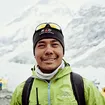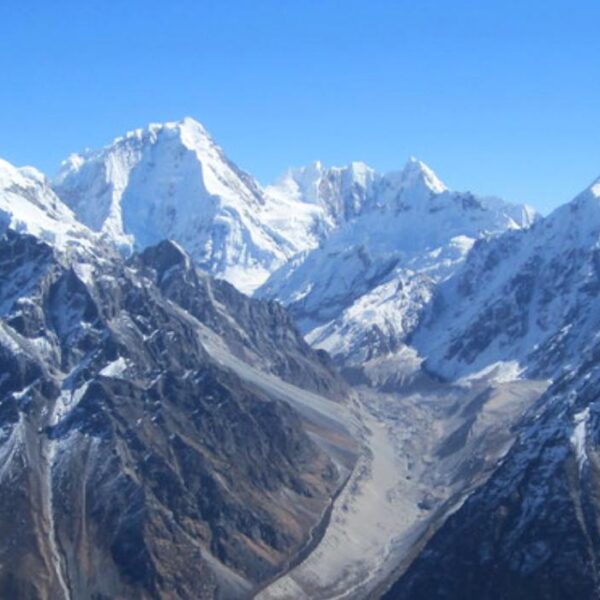Scenic drive to Syabrubesi
You leave Kathmandu by jeep or bus following winding mountain paths all the way to Syabrubesi, where you pass terraced fields, river valleys, and bustling towns. Ganesh Himal can be seen above the horizon in clear mornings in the Himalayas, teasing the drama of the Himalayas that lies ahead.
The ride can be bumpy, but village life, waterfalls, and children waving enliven every bend. The twists and turns take you along green hills merging to give you views every time you turn a corner.
Langtang National Park trek and biodiversity
The trek spends most of the time within the Langtang National Park, filled with forests that are home to the grey langurs, Himalayan blue sheep, and elusive red panda. The path weaves through bamboo and fern, with oak and rhododendron in the spring, spreading all the color on the hillside.
Forests are replaced with higher alpine meadows with wildflowers and grazing yaks at higher altitudes. The clean air, cloudless nights, and conservation form a refuge that enhances the bond with the wild heart of the Himalaya.
Langtang village recovery and culture
The Langtang Village is inspiring. Destroyed by a catastrophic avalanche during the earthquake in 2015, it has been rebuilt with resilience and hope. New lodges have been built, welcoming trekkers whose presence enhances the livelihoods and honor those who died here.
Accompanied by butter tea and mumbled prayers, you will experience the warm hospitality of the Tamang people. The narratives of struggles and unity demonstrate the soul of life and salvation, leaving visitors by the power of the human spirit in the mountains.
Kyanjin Gompa exploration
At around 3,900 meters, Kyanjin Gompa reminds more of a Himalayan amphitheater encircled by glaciers and high points. Visit the monastery where prayer flags wave, Yak bells ring, and the air is crisp, clearing up every sight and every thought.
Here, you can taste fresh yak cheese and yogurt, enjoy a bakery treat, or hike Kyanjin Ri for a panorama of glacier ranges. Amidst the chatting with the locals who are amiable and taking tea pauses, acclimate at a slow pace, soaking in the cultural, scenic, and their tranquil silence.
Yala Peak summit and mountain views
Standing at the summit of Yala Peak (5,500 meters) conveys delight, pride, and amazement. You can see Shishapangma rising upwards in Tibet, Langtang Lirung, Dorje Lakpa, and Ganesh Himal standing towering overhead.
Follow the small trail of line way down and reflect on the effort that brought you here. The pictures are eternal, but the impression of mountain light in the early morning is even greater.
Optional Tserko Ri viewpoint
Above Kyanjin is the Tserko Ri ridge at 5,000 meters that provides an excellent acclimatization for hiking. Begin before sunrise and climb steadily to get swamped by the Langtang range with gold and rose light.
Without heavy packs, most hikers manage the steep ascent comfortably once acclimatized. From the top, broad horizons are inspirational to photographers, as well as daydreamers. This side adventure is an enjoyable part, which is a brilliant addition to the Yala Peak climbing itinerary.
Glacier travel and climbing preparation
Yala Peak provides many trekkers with their first experience in mountaineering as the ‘walk’ becomes ‘climb’ only beyond the treeline at Yala Kharka. A sense of expedition camaraderie develops while checking gear, reviewing safety issues, and letting the anticipation build under great starry skies, before calling it a night for an early start.
Pre-dawn movement under headlamps and crampons introduces more scrambling, using ropes, and keeping a steady pace. Guides instruct in using harnesses, axes, and traversing snow patches and moraines. With seracs looming around you, your confidence and abilities develop, and you find yourself on a summit feeling like a mountaineer.
Return trek and Syabrubesi wrap-up.
The adventure does not cease once at the summit as you move down the Langtang Valley, enjoying the distances covered and ridgelines climbed. The valley air is thicker, and your energy returns, forests reappear, and rivers are starting to make noise.
When back to Syabrubesi, it feels like a celebration in spite of the days gone by. There will be warm showers, hearty food, and laughter to bring closure to the trip before making the very long journey back.



